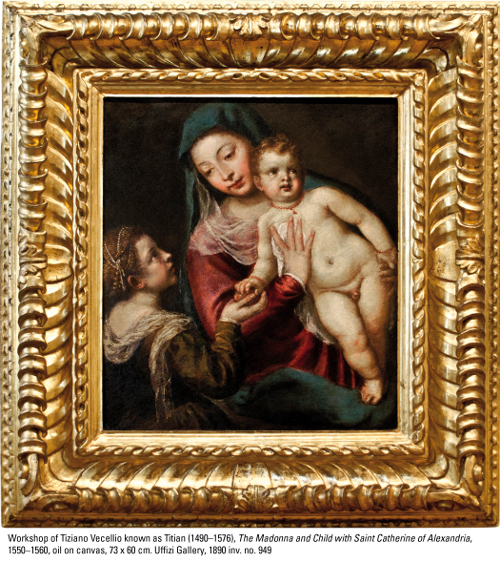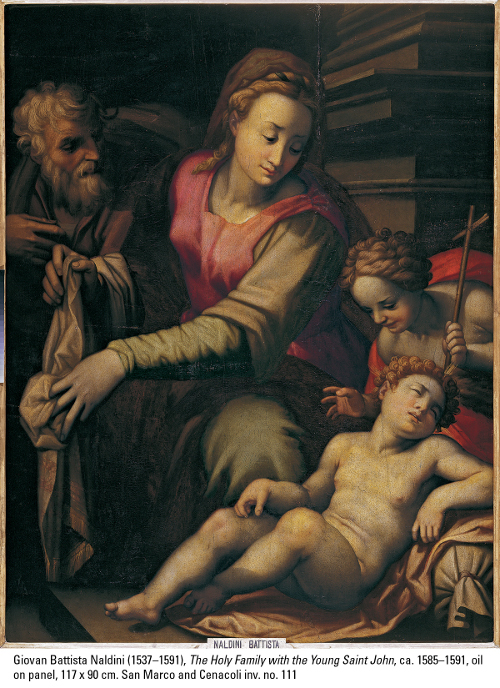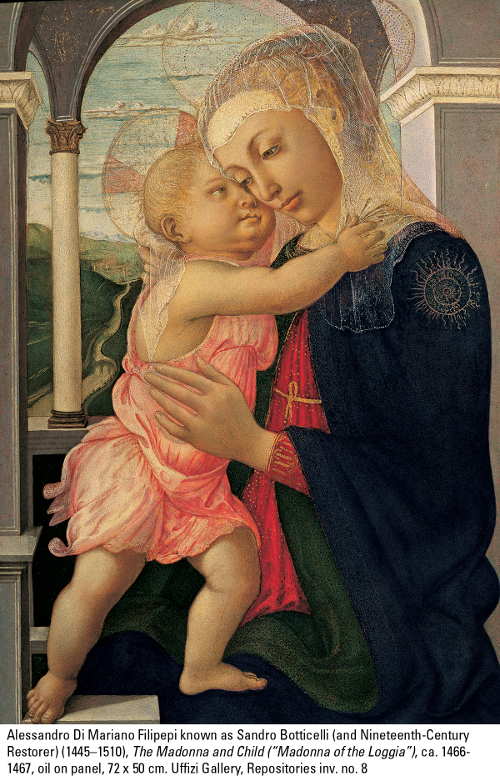There is a tendency to think of works of art as frozen in time, dropped like manna from heaven by some master artist. The master artist creates the art work during a flash of inspiration, and offers it as a one time gift to all of humankind. The finished work of art is handed over to a purchaser, patron, church, or market for display, safekeeping, and storage. However, a recent collection of Renaissance and Baroque art from the Uffizi in Florence, the Offering of Angels, demonstrates the ongoing nature of the interaction between art and community. These works are not static, one time gifts that are frozen in time, but are continually evolving projects, with major portions being contributed long after the artist is dead. This art is a living, integral part of the community, starting with the first brush stroke centuries ago. The original artists are like angels with their initial creative offerings, but the art continues to change over time. The art of angels is an ongoing creation of community. 
The Offering of Angels is now touring four museums in the United States. Currently the exhibit is at the Chazen Museum in Madison, Wisconsin, and next it will travel to the Telfair Museum in Savannah, Georgia. Many of the works in this show have never even been seen by the public in Florence, where the Uffizi is located. At the Chazen, on first entering the exhibit, a visitor sees The Fall of Manna, by Fabrizio Boschi. The Offering of Angels, was originally titled The Bread of Angels referring to the Biblical manna from heaven that allowed the people if Israel to cross the desert, and also referencing the Eucharist in Christian liturgical practice. This 144 x 229 cm painting depicts the manna falling, yet the figures in the painting are not exclusively depicted in Biblical costumes. There are Biblical characters, but there is a prominent figure in the painting, a woman observing and commenting on the event, who is shown in 16th century dress, in contrast to the other figures in Biblical costumes. In a sense, the "manna" event is taking place over time, with participants in different time periods centuries apart.
Likewise, another painting is titled Pieta with Saints John the Baptist and Catherine of Alexandra, by Il Cappucino Veronese, which shows St. Catherine at the crucifixion. However, is it generally agreed that Catherine of Alexandria was a saint of the 4th century. So why is she in the painting? It turns out that this painting was commissioned by Caterina de Medici, and her namesake saint was Catherine of Alexandria. Even from the beginning, the community surrounding the art was part of the art, in creation as well as in depiction.
While the inclusion of local figures is one element of community, it is fascinating to discover that these works of art are actually still being modified, still being created! They are truly art works in process. For example, one painting by Il Parmigianino has beautiful saturated colors, and strong contrasting dark areas. There is an interesting dark curtain that drapes over the back of the Madonna's head and around the child. This is what visitors to the exhibit see and admire. Yet, on further inspection, this dark area appears strange in the context of the entire work. It turns out that the dark background is simply one part of the painting that has not yet been cleaned of the aged varnish. At some point in the future a major part of what we now see in this painting will be removed!
Two of the paintings in the exhibit demonstrate a later state in the restoration process. In the case of Titian's Madonna and Child with Saint Catherine of Alexandria, the stages of restoration are shown to the public using large photographic images, before and after the removal of varnish. Both Titian's work and Giovan Battista Naldini's Holy Family with the Young Saint John, show figures after the removal of vanish. What is interesting is that the thickness of brush strokes on both of these paintings prevents the varnish from being completely removed. There is dark residue in the crevices between the stokes. This is difficult to see in a photograph, but becomes readily apparent when viewing the painting in person. Sometimes, as with the Naldini, the residue forms dots that become patterns. In the case of the Titian, the residue becomes more prominent around edges of hairlines and clothing. Such paintings as these have actually been restored multiple times in the past, and will no doubt receive additional treatment in the future. 
Perhaps the most widely recognized painting in the Offering of Angels is Sandro Botticelli's Madonna and Child ("Madonna of the Loggia"). This painting has undergone multiple restorations, one of which was so disastrous that the faces were eventually repainted in their entirety. The only parts of the painting that are definitely original are the red gown of the Virgin and the distant landscape. This painting has been highly prized throughout its history, yet has undergone continual upgrades and modifications. It looked entirely different in the sixteenth century from what it does now. The painting has never been permanently finished, no longer to be modified.
The Offering of the Angels shows artworks not normally on public display, but nevertheless demonstrates the ongoing relationship these works have with community. The art has enhanced churches, dining rooms, museums and sometimes has been stored in basements. The paintings have been modified and added to repeatedly over time, sometimes to the point where the original work can barely be recognized. Through all this, they still speak to the people who interact with them. In a certain sense, these works of art are gifts of the artists, who are angels of a sort, offering their creation to communities who then continue to interact with the art over the centuries. The art of angels is a gift to the community, not a collection of static works frozen in time.